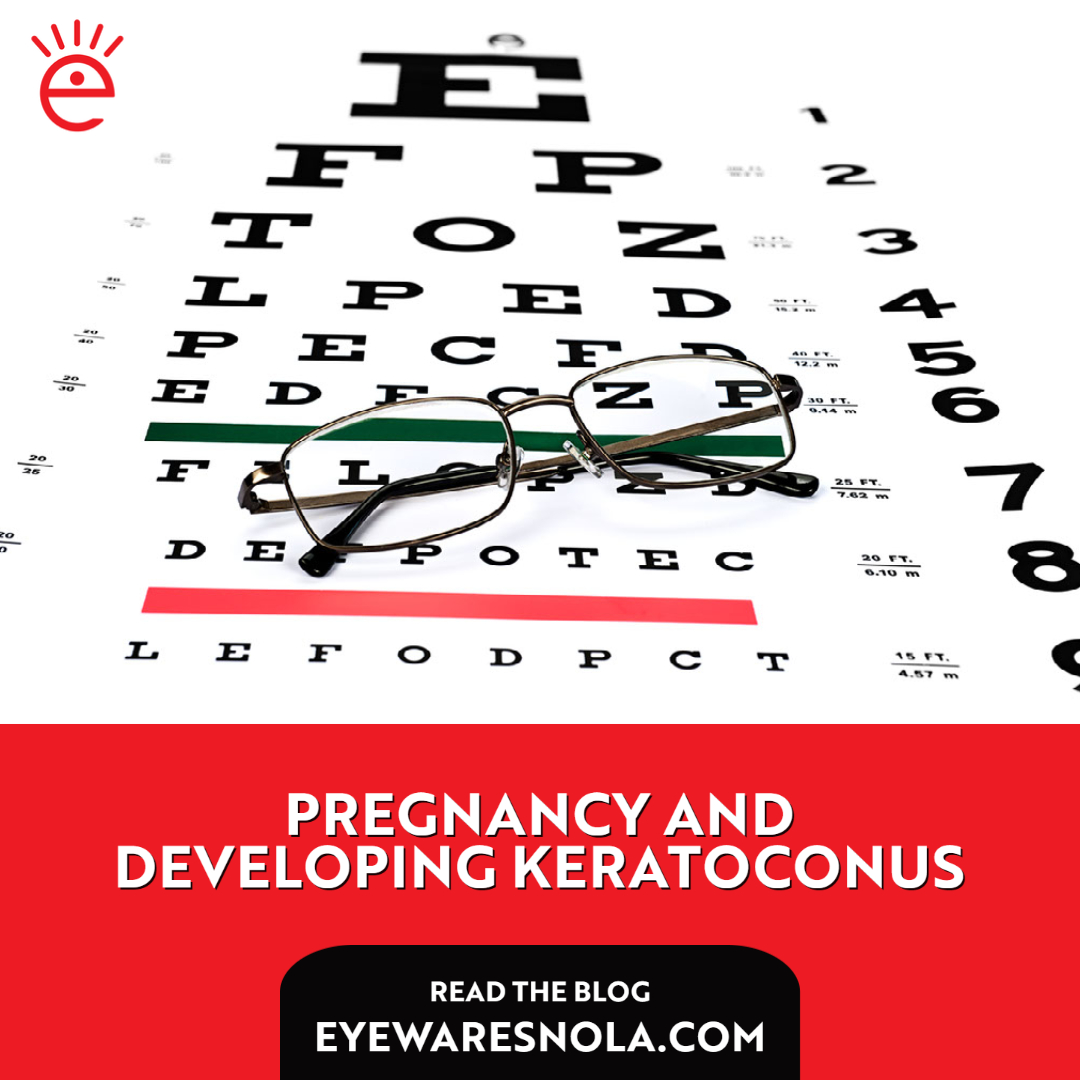According to a recent article in Optometry Times, correlations between pregnancy and developing keratoconus are drawing more attention from the medical field. If you have a genetic predisposition to keratoconus and become pregnant, you may have a higher likelihood of developing keratoconus or see a renewed progression of existing keratoconus. But keratoconus isn’t the only vision change many women experience during pregnancy. Blurred vision, dry eye, and other vision changes are often reported in the second and third trimesters. Read on to learn how pregnancy can potentially affect your vision and eye health.
Why Do Pregnant Women Experience Vision Changes?
Pregnant women undergo many extreme hormonal changes during pregnancy, which may lead to different types of vision changes. Most of these are temporary, but a preexisting genetic condition could lead to possible long-term changes. Some short-term changes include the following:
- Dry Eyes. The treatment for dry eyes is the same whether or not you’re pregnant. Artificial tears are the best solution for dry eyes. Check the solution to make sure it can be used with your contacts.
- Blurred Vision. Pregnant women often retain fluids, which can translate to excess fluid in the eye. This fluid affects the shape and size of your cornea, which can distort vision. These side effects usually disappear shortly after giving birth. If they persist, contact your optometrist.
- Diabetes. The blood vessels in your retina can be damaged by high blood sugar levels, linked to a temporary form of diabetes called gestational diabetes. This can also cause blurred vision. A doctor can help you formulate a plan to maintain your blood sugar levels.
- Preeclampsia. A potentially severe vision change that affects pregnant women is called preeclampsia. This condition is characterized by high blood pressure and could be indicative that the body has sustained damage to an organ, such as the liver or kidneys. Symptoms include blurry vision, sensitivity to light, auras, spots, flashing lights, or temporary loss of vision. It is most common in women who have been pregnant for at least 20 weeks and have experienced abnormal blood pressure levels.
Pregnancy and Keratoconus
Keratoconus is a condition where the cornea thins and changes shape to bow outward, creating a cone-like shape. This can create blurred and distorted vision, double vision, sensitivity to light, or even vision loss. Research shows that women predisposed to keratoconus may see accelerated symptoms during pregnancy. Only your eye doctor can determine the best course of action for your keratoconus and measure the acceleration of the condition.
- Optomap Retinal Imaging. At Eye Wares, eye exams are conducted with Optomap retinal imaging. This is a painless, comfortable process in which your eye care practitioner captures an image of your retina to evaluate. Optomap can detect developmental eye issues as well as countless diseases, such as keratoconus, glaucoma, macular degeneration, diabetic retinopathy, and more! Most importantly for pregnant women, it can track the development of keratoconus.
Pregnancy and Preventative Eye Care
Preventative care is critical to a healthy pregnancy, which is why including your regular eye exam on your checklist of appointments should be a top priority. Fluid retention, high blood sugar, and hormonal changes can all affect your vision. Pregnant women can start preparing for possible vision changes by drinking lots of water and scheduling their next appointment at Eye Wares.
Visit Eye Wares for Your Annual Eye Exam
Eye Wares is your one-stop-shop for eyewear and eye health needs. Regular eye exams, especially in pregnant women, can help determine if you have any eye diseases or vision deterioration that require treatment and observation. Schedule your next eye exam at Eye Wares, so our expert doctors can help design a vision plan that’s right for you!


